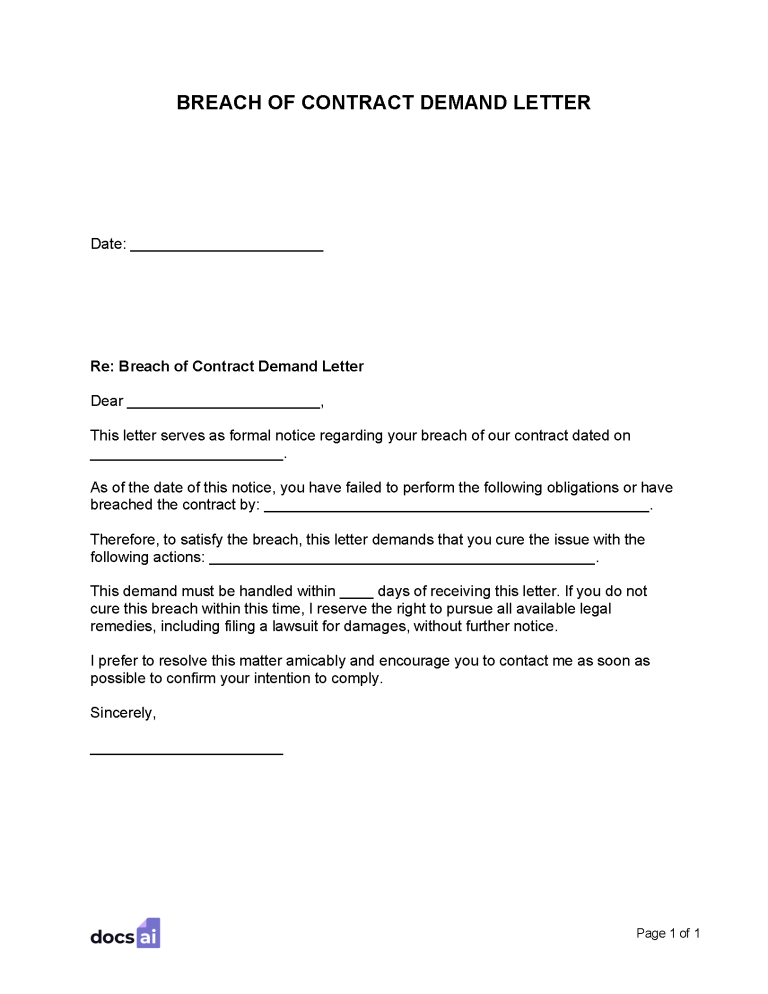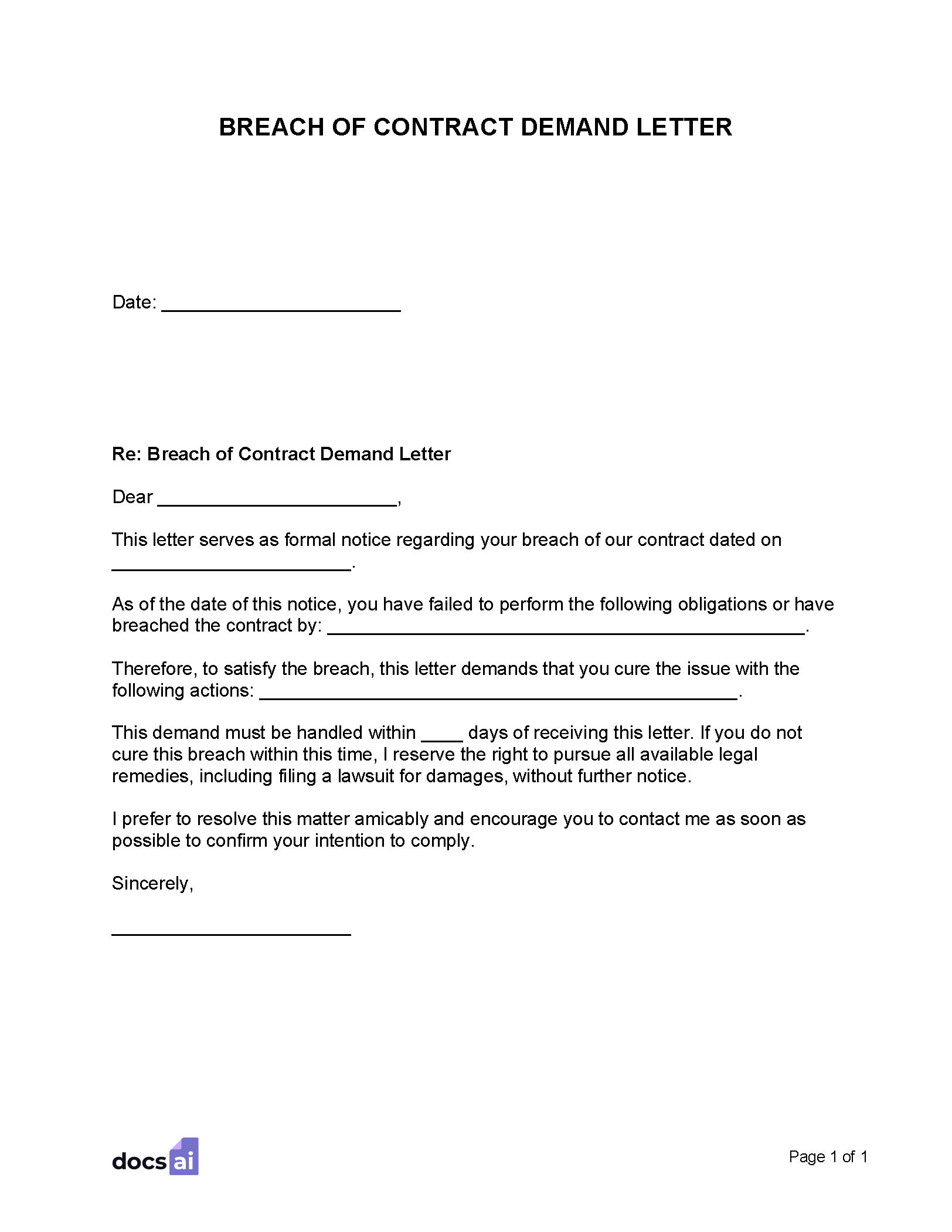Key Features
-
Notice of Failure to Perform. Notify the violating party that they have failed to perform under the contract terms. Write the specific clauses that were violated.
-
Describe the Breached Obligation. Describe the specific action that violated the agreement.
- Demand the Breach be Cured. Write instructions on how to cure the breach, including any payment for damages.
-
Set a Deadline. Write the date or timeframe when the breach must be cured.
-
Warn of Legal Action. Let them know that if the breach is not cured, legal action will take place.
How to Remedy (6 steps)
1. Find the Original Contract
2. Gather Evidence
3. Send Notice
4. Communicate with Breaching Party
Try to resolve the matter with the breaching party by finding a solution or a settlement. If the breaching party is unresponsive, read the original contract to review the alternative dispute resolution.
Alternative Dispute Resolution (ADR) – 2 Types
- Mediation – A neutral third (3rd) party (mediator) helps the disputing parties find an amicable solution by guiding the parties to a settlement.
- Arbitration – A neutral third (3rd) party (arbitrator) helps the disputing parties find an amicable solution by deciding a settlement on behalf of the parties (binding or non-binding).
5. File a Lawsuit (if necessary)
If all resolutions are exhausted, the only solution may be to file a lawsuit in the jurisdiction where the breach occurred (unless otherwise mentioned in the original contract).
6. Enforce the Judgment
After obtaining a favorable ruling, the violated party must enforce the order and collect the damages through garnishment, liens, or other legal methods.
Sample
BREACH OF CONTRACT DEMAND LETTER
[CLAIMANT’S NAME]
[STREET ADDRESS]
[CITY, STATE, ZIP CODE]
[PHONE NUMBER]
[E-MAIL]
Date: [DATE]
[RECIPIENT’S NAME]
[STREET ADDRESS]
[CITY, STATE, ZIP CODE]
[E-MAIL]
Re: Breach of Contract Demand Letter
Dear [RECIPIENT’S NAME],
This letter serves as formal notice regarding your breach of our contract dated on [ORIGINAL CONTRACT DATE].
As of the date of this notice, you have failed to perform the following obligations or have breached the contract by: [DESCRIBE BREACH].
Therefore, to satisfy the breach, this letter demands that you cure the issue with the following actions: [DESCRIBE HOW TO CURE].
This demand must be handled within [#] days of receiving this letter. If you do not cure this breach within this time, I reserve the right to pursue all available legal remedies, including filing a lawsuit for damages, without further notice.
I prefer to resolve this matter amicably and encourage you to contact me as soon as possible to confirm your intention to comply.
Sincerely,
_______________________
-
A material breach is a major and often incurable violation that terminates the original agreement. The breaching party commonly no longer has a duty to perform its obligations and is entitled to sue for damages.
-
A violated party can sue for compensatory damages, which is defined as the direct and consequential losses incurred. There is no dollar limit, but the amount of damages must be supported by evidence.
-
- Monetary Damages: A party incurring damages will likely seek monetary damages and other equitable remedies to cover losses.
- Injunction: If the breaching party continues to violate a contract despite repeated warnings, an injunction can be filed, which is a court order requiring them to stop.
- Specific Performance: A court can remedy a breach by specific performance, which requires the breaching party to fulfill its obligations under the contract.
-
A breach of contract occurs when a party fails to perform their duties and meet the obligations under a valid agreement.
This includes:
- Failing to meet specific timelines;
- Not adhering to defined standards; or
- Not performing at all.
-
Unless illegal activity is involved, a person will unlikely go to jail for breaking a contract.
However, if fraud, theft, or false information were involved, which would be deemed criminal, a person could be jailed for their actions.


